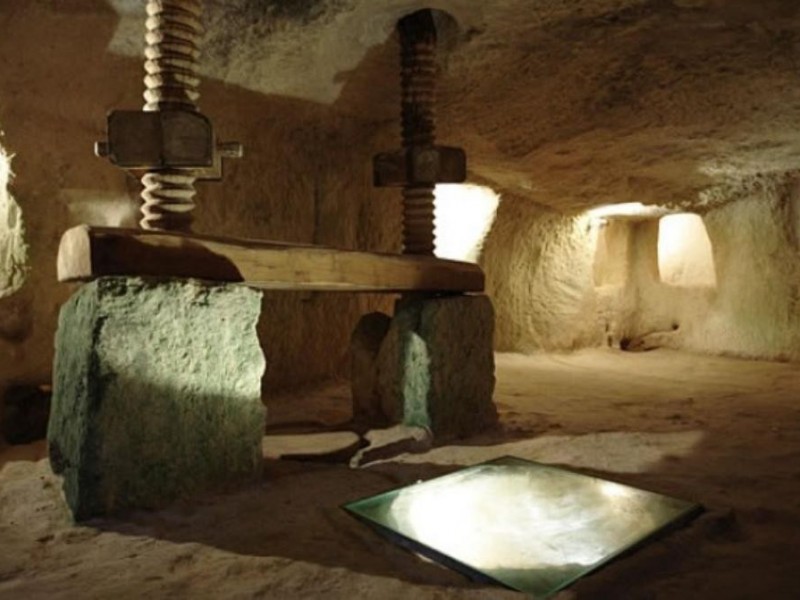Ipogeo Frantoio
Hypogeum Frantoio
Archeology

Built, probably in Norman times, the interesting underground oil mill, whose access opens along the walls of Via Cava, tells of the Apulian practice of producing oil in rooms carved into the rock.
The underground oil mills, very common in Taranto and Salento, were widely used and longevity of use as they ensured safety and a constant temperature that ensured better oil production and storage conditions. The one in Via Cava is probably placed chronologically to the Norman age following the discovery of a notarial deed (dated to 1084) in the archive which refers to the presence of a millstone in this part of the city. The discovery of this important document not only testifies to the production of oil (both food and lampare) within the urban fabric of ancient Taranto, but also makes Via Cava one of the oldest underground oil mills in Puglia.
The space, an admirable example of architecture in negative and of the one under construction, still preserves in situ some millstones used for the first pressing of the olives and several tanks for decanting the product.

Built, probably in Norman times, the interesting underground oil mill, whose access opens along the walls of Via Cava, tells of the Apulian practice of producing oil in rooms carved into the rock.
The underground oil mills, very common in Taranto and Salento, were widely used and longevity of use as they ensured safety and a constant temperature that ensured better oil production and storage conditions. The one in Via Cava is probably placed chronologically to the Norman age following the discovery of a notarial deed (dated to 1084) in the archive which refers to the presence of a millstone in this part of the city. The discovery of this important document not only testifies to the production of oil (both food and lampare) within the urban fabric of ancient Taranto, but also makes Via Cava one of the oldest underground oil mills in Puglia.
The space, an admirable example of architecture in negative and of the one under construction, still preserves in situ some millstones used for the first pressing of the olives and several tanks for decanting the product.
Hypogeum Frantoio
Archeology

Built, probably in Norman times, the interesting underground oil mill, whose access opens along the walls of Via Cava, tells of the Apulian practice of producing oil in rooms carved into the rock.
The underground oil mills, very common in Taranto and Salento, were widely used and longevity of use as they ensured safety and a constant temperature that ensured better oil production and storage conditions. The one in Via Cava is probably placed chronologically to the Norman age following the discovery of a notarial deed (dated to 1084) in the archive which refers to the presence of a millstone in this part of the city. The discovery of this important document not only testifies to the production of oil (both food and lampare) within the urban fabric of ancient Taranto, but also makes Via Cava one of the oldest underground oil mills in Puglia.
The space, an admirable example of architecture in negative and of the one under construction, still preserves in situ some millstones used for the first pressing of the olives and several tanks for decanting the product.
contacts
Via Cava 99, 74123, Taranto
useful information
accessible
opening time
su prenotazione